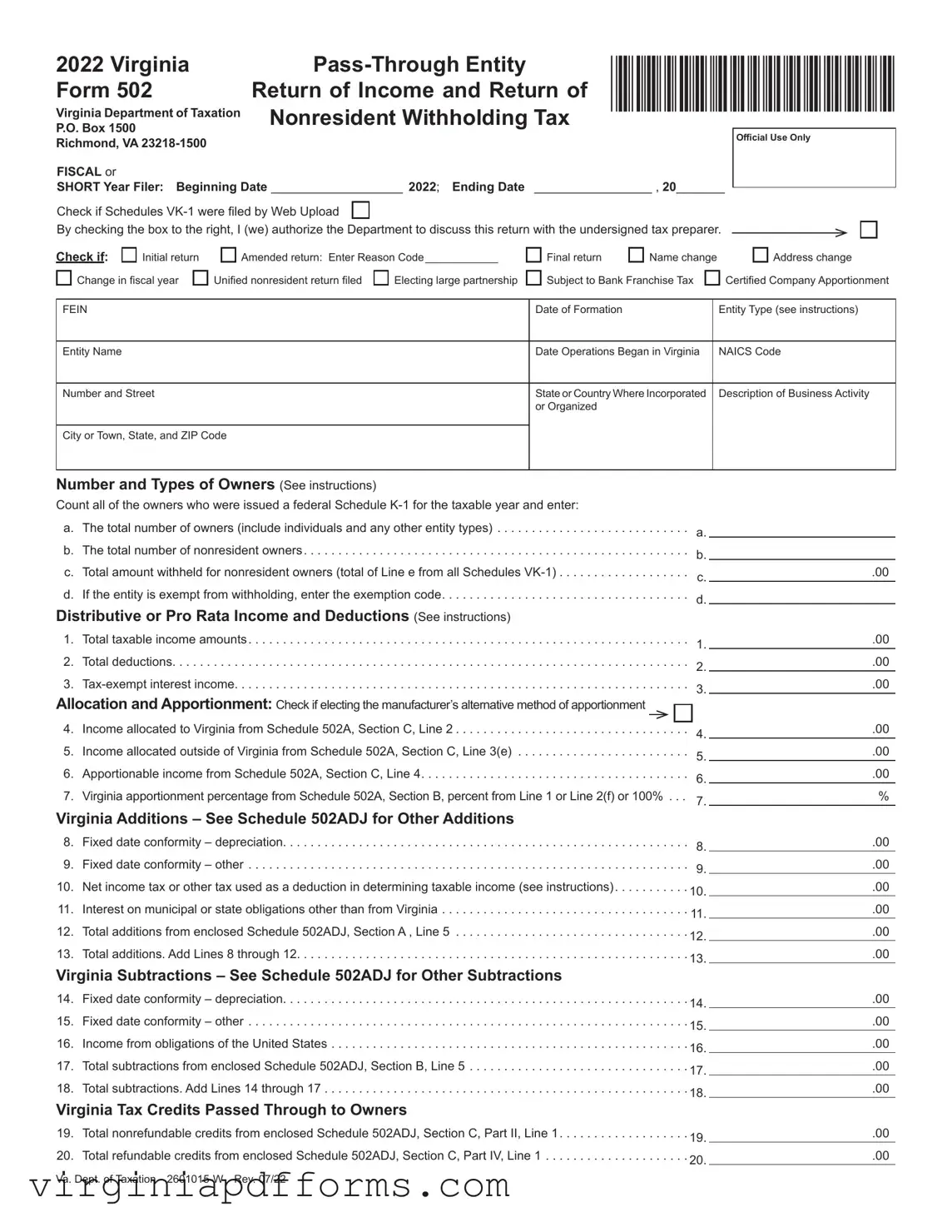Fill in a Valid Virginia 502 Template
The Virginia 502 form is a tax document specifically designed for pass-through entities operating in Virginia. This form facilitates the reporting of income, deductions, and withholding tax obligations for nonresident owners. Accurate completion of the Virginia 502 is essential for compliance with state tax laws and to ensure proper tax treatment for both the entity and its owners.
Access My Document Now
